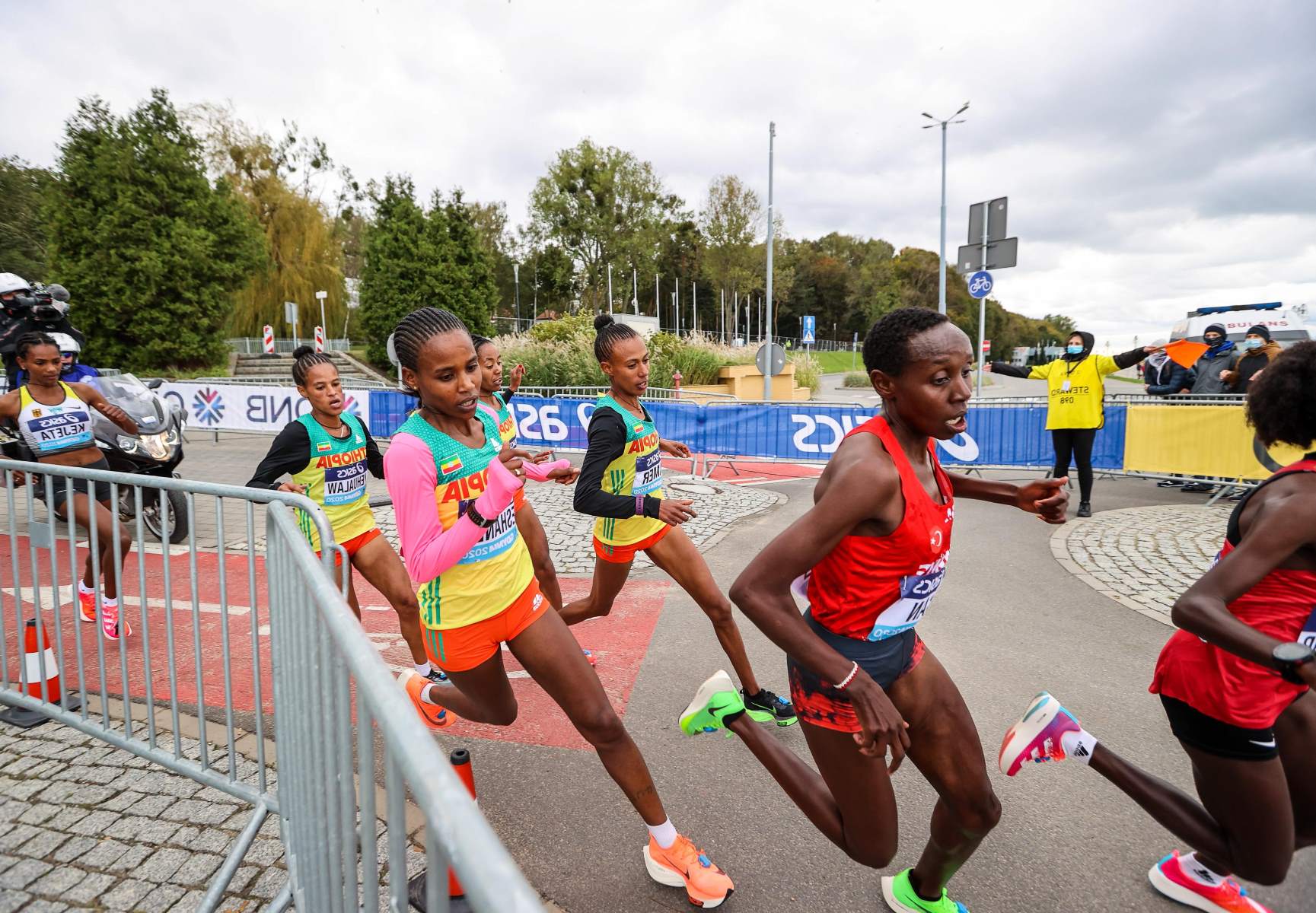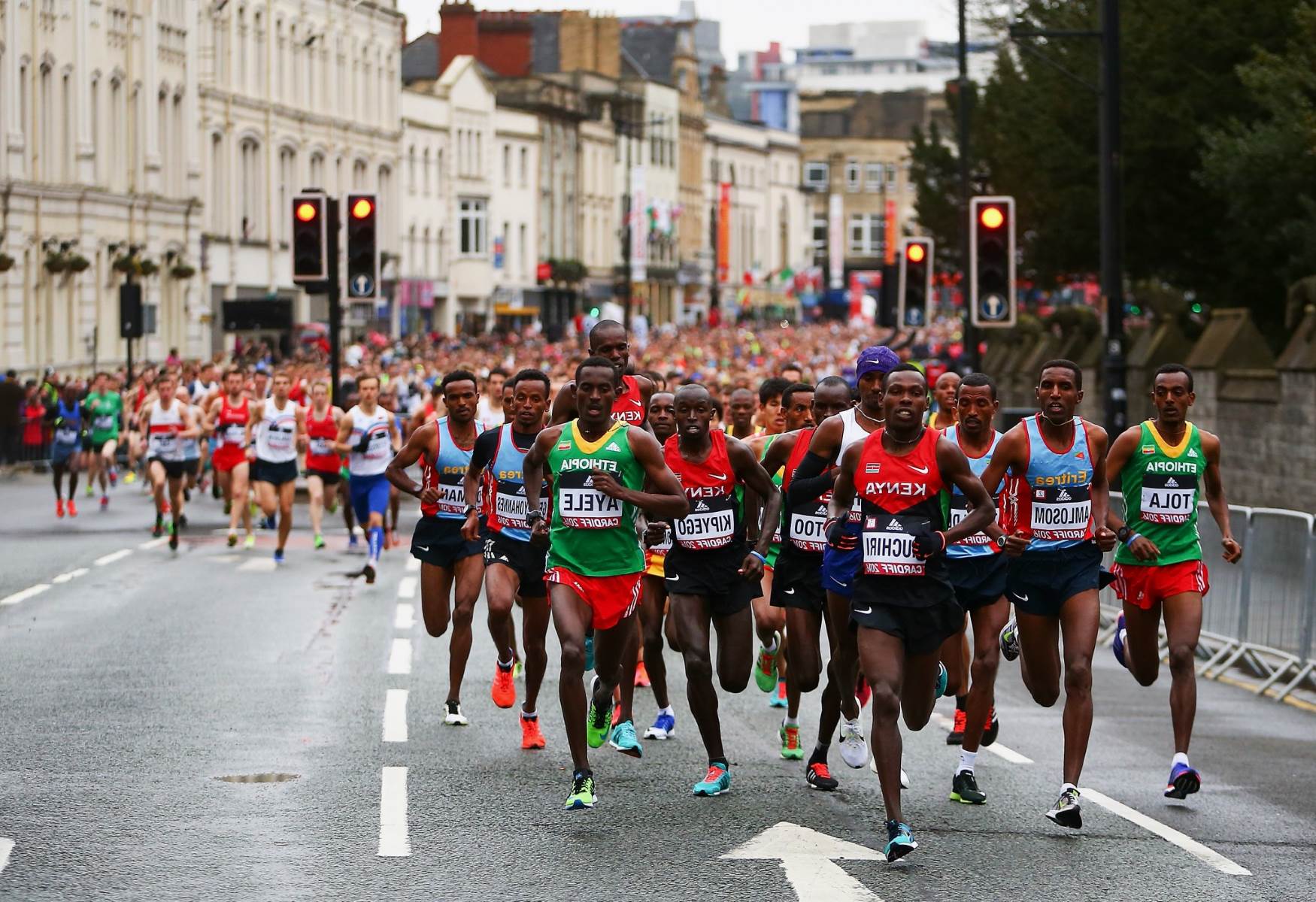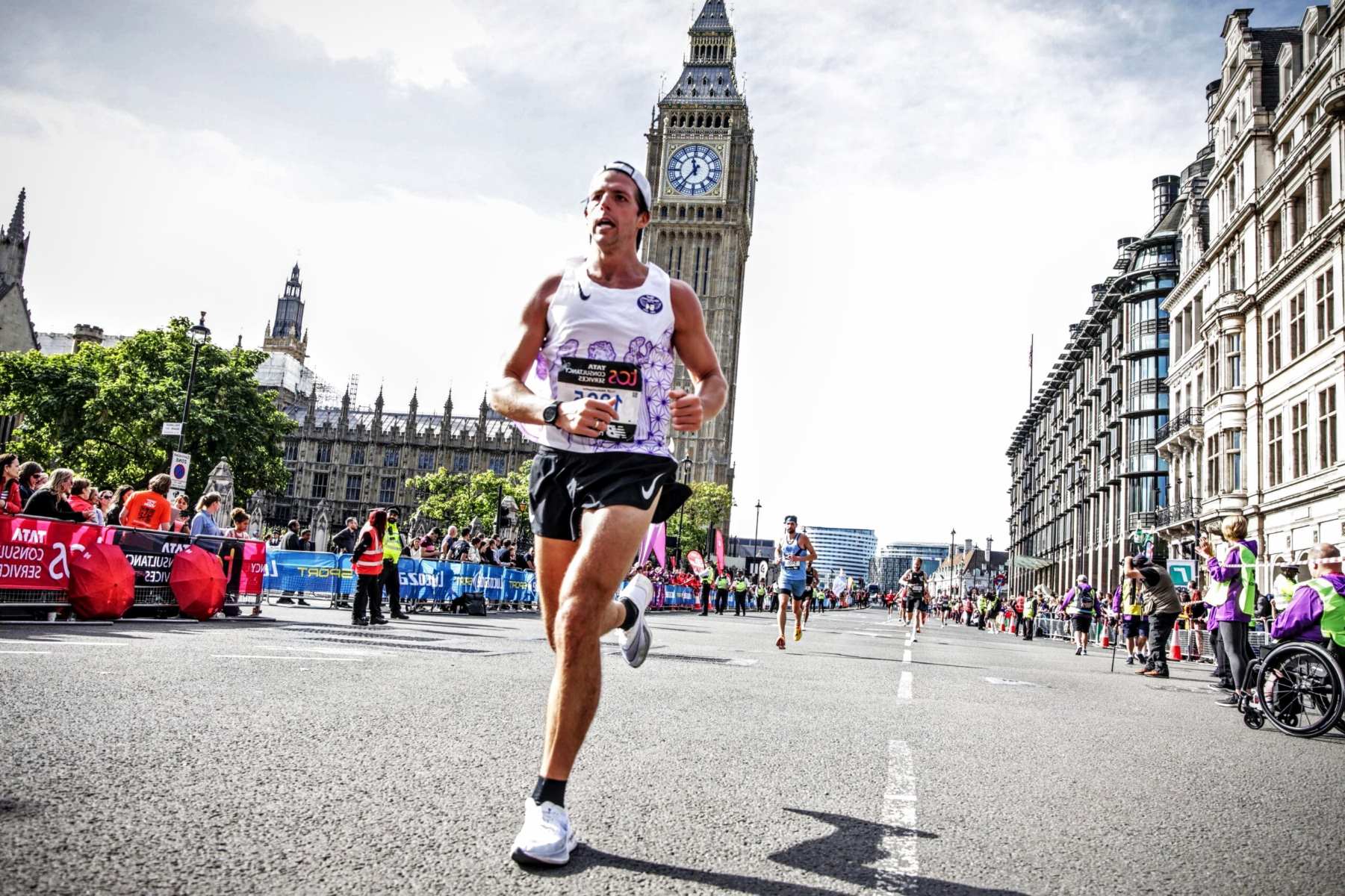Home>Training & Techniques>Transitioning From A 10K To A Half Marathon: Tips For Success


Training & Techniques
Transitioning From A 10K To A Half Marathon: Tips For Success
Published: February 28, 2024
Discover effective training and techniques for successfully transitioning from a 10K to a half marathon. Get expert tips and advice to optimize your performance.
(Many of the links in this article redirect to a specific reviewed product. Your purchase of these products through affiliate links helps to generate commission for Therunningadvisor.com, at no extra cost. Learn more)
Table of Contents
Setting Your Training Schedule
When transitioning from a 10K to a half marathon, it's crucial to establish a well-structured training schedule that gradually builds endurance and mileage. This process is essential for preparing your body to tackle the increased distance and intensity of a half marathon. Here are some key considerations to keep in mind as you set up your training plan:
-
Assess Your Current Fitness Level: Before diving into a half marathon training program, take stock of your current fitness level. Evaluate your recent running routine, including the distance and frequency of your runs. This self-assessment will help you gauge your starting point and determine the level of challenge that lies ahead.
-
Gradual Mileage Increase: A gradual approach to mileage increase is paramount. Begin by incorporating longer runs into your weekly schedule, gradually extending the distance over several weeks. This incremental progression allows your body to adapt to the heightened demands of longer runs, reducing the risk of overuse injuries.
-
Long Runs: Long runs are the cornerstone of half marathon training. These runs, typically performed once a week, aim to build endurance and mental resilience. Start with a comfortable distance and gradually increase it, with the goal of covering the half marathon distance at least once before race day.
-
Rest and Recovery: Integrate rest days into your training schedule to allow your body to recover and adapt to the physical stress of running. Adequate rest is essential for injury prevention and overall performance improvement.
-
Cross-Training: Incorporating cross-training activities, such as cycling, swimming, or strength training, can complement your running routine. These activities help strengthen supporting muscles, improve cardiovascular fitness, and reduce the risk of overuse injuries.
-
Tapering: As race day approaches, incorporate a tapering phase into your training schedule. This involves reducing mileage and intensity to allow your body to rest and recover fully, ensuring that you arrive at the start line feeling fresh and prepared.
By carefully structuring your training schedule with these considerations in mind, you can effectively transition from a 10K to a half marathon while minimizing the risk of injury and maximizing your performance potential.
Adjusting Your Nutrition and Hydration
Proper nutrition and hydration play a pivotal role in the successful transition from a 10K to a half marathon. As the distance and intensity of your runs increase, it becomes essential to adjust your dietary intake and hydration strategies to support your training and optimize performance. Here's a detailed look at how you can fine-tune your nutrition and hydration for the transition:
Balanced Diet:
Transitioning to half marathon training necessitates a balanced and nutrient-rich diet. Focus on incorporating a variety of whole foods, including lean proteins, complex carbohydrates, healthy fats, and an abundance of fruits and vegetables. These elements provide essential nutrients, such as iron, calcium, and vitamins, which are crucial for energy production, muscle function, and overall health.
Increased Caloric Intake:
As your training volume escalates, your body's energy requirements also increase. It's important to adjust your caloric intake to fuel your runs and facilitate recovery. Aim to consume a slightly higher number of calories, primarily from wholesome sources, to meet the heightened demands of half marathon training while maintaining a healthy weight.
Pre-Run Nutrition:
Prior to long runs and intense training sessions, pay attention to pre-run nutrition. Consuming a balanced meal or snack that combines carbohydrates for readily available energy and a moderate amount of protein can help sustain your performance and delay the onset of fatigue during longer runs.
Hydration Strategies:
Hydration is a critical component of half marathon training. Adequate fluid intake supports optimal performance and aids in regulating body temperature. Develop a hydration plan that ensures you are adequately hydrated before, during, and after your runs. Consider factors such as weather conditions and sweat rate to tailor your hydration strategy to your specific needs.
Electrolyte Balance:
During longer runs, especially in warmer conditions, electrolyte balance becomes crucial. Incorporate electrolyte-rich beverages or supplements to replenish the sodium, potassium, and other minerals lost through sweat. Maintaining proper electrolyte balance can help prevent cramping and support overall hydration.
Post-Run Recovery:
After completing long runs, prioritize post-run recovery nutrition. Consuming a combination of carbohydrates and protein within the first 30 minutes to an hour post-exercise can aid in muscle glycogen replenishment and tissue repair, facilitating a speedier recovery process.
By adjusting your nutrition and hydration to align with the increased demands of half marathon training, you can optimize your body's ability to perform, recover, and adapt. These adjustments not only support your physical endeavors but also contribute to overall well-being and long-term athletic success.
Incorporating Cross-Training
In the journey from a 10K to a half marathon, the incorporation of cross-training activities can significantly enhance overall performance, reduce the risk of injury, and promote balanced muscular development. Cross-training involves engaging in alternative forms of exercise beyond running, such as cycling, swimming, strength training, or yoga. By diversifying your physical activities, you can reap a multitude of benefits that directly complement your running routine.
Benefits of Cross-Training
-
Injury Prevention: Running places repetitive stress on specific muscles and joints. By integrating cross-training, you can reduce the risk of overuse injuries by allowing those primary running muscles to recover while engaging different muscle groups through alternative activities.
-
Muscular Balance and Strength: Cross-training activities target muscles that may be underutilized during running, promoting balanced muscular development. For instance, swimming engages the upper body, cycling strengthens the quadriceps and glutes, and strength training enhances overall muscular strength and stability.
-
Cardiovascular Fitness: Engaging in cross-training activities that elevate the heart rate, such as cycling or swimming, can improve cardiovascular endurance without subjecting the body to the repetitive impact of running. This can enhance overall aerobic capacity and complement the cardiovascular demands of long-distance running.
-
Mental Refreshment: Cross-training provides a mental break from the monotony of running, reducing mental fatigue and burnout. It introduces variety into your training routine, keeping motivation levels high and adding an element of enjoyment to your overall fitness regimen.
Implementation Strategies
-
Strategic Scheduling: Integrate cross-training sessions into your weekly training schedule, strategically placing them on non-running days or following particularly challenging runs. This allows for active recovery while maintaining physical activity.
-
Varied Activities: Explore a range of cross-training activities to target different muscle groups and energy systems. This diversity not only promotes overall fitness but also reduces the risk of overuse injuries associated with repetitive motion.
-
Specific Focus: Tailor cross-training activities to address individual weaknesses or imbalances. For instance, incorporating strength training can target muscle groups that are underdeveloped in runners, enhancing overall strength and stability.
-
Recovery and Regeneration: Utilize low-impact cross-training activities, such as swimming or cycling, for active recovery following intense running sessions. This aids in promoting circulation, reducing muscle soreness, and expediting the recovery process.
By strategically incorporating cross-training into your half marathon training regimen, you can harness the diverse benefits of alternative physical activities, promoting overall fitness, resilience, and performance. This holistic approach not only enhances your running capabilities but also fosters a well-rounded and sustainable approach to athletic development.
Mental Preparation and Goal Setting
Mental preparation and goal setting are integral components of transitioning from a 10K to a half marathon. While physical training builds the body's endurance, mental fortitude and clear objectives are equally crucial for success in long-distance running. Here's a comprehensive exploration of the strategies and mindset required for effective mental preparation and goal setting:
Visualizing Success
Visualization is a powerful mental tool that can enhance performance and bolster confidence. Athletes often employ visualization techniques to mentally rehearse the entire race experience, from the start line to crossing the finish line. By vividly imagining the physical sensations, surroundings, and successful outcomes, runners can cultivate a positive and resilient mindset, preparing themselves for the challenges ahead.
Read more: Mastering The Art Of Running A Flawless 10K
Positive Self-Talk
The way runners speak to themselves internally can significantly impact their performance. Positive self-talk involves replacing self-doubt and negative thoughts with affirming and constructive statements. By fostering a mindset of self-belief and resilience, runners can navigate through tough moments during training and races, maintaining a determined and optimistic outlook.
Setting Realistic Goals
Goal setting is a fundamental aspect of half marathon preparation. Establishing clear, realistic, and measurable goals provides runners with a sense of purpose and direction. Whether it's completing the race within a specific time frame, conquering challenging terrains, or achieving personal bests, well-defined goals serve as motivational beacons, propelling runners forward during training and on race day.
Embracing Adaptability
While setting ambitious goals is essential, it's equally important to embrace adaptability and flexibility. Long-distance running is inherently unpredictable, and factors such as weather conditions, course terrain, and personal well-being can influence performance. By cultivating a mindset that embraces adaptability, runners can adjust their strategies and expectations as needed, fostering resilience and composure in the face of unforeseen circumstances.
Managing Pre-Race Anxiety
Pre-race jitters are common among runners, especially when transitioning to longer distances. Developing effective strategies to manage pre-race anxiety, such as deep breathing exercises, visualization, and focusing on the present moment, can help runners maintain a calm and focused mindset. By acknowledging and addressing pre-race nerves, runners can channel their energy into positive anticipation and readiness for the challenge ahead.
Cultivating Mental Resilience
Endurance running demands mental resilience, characterized by the ability to persevere through discomfort and adversity. This resilience can be cultivated through consistent mental conditioning, exposure to challenging training scenarios, and learning to embrace discomfort as a natural part of the running experience. By developing mental toughness, runners can navigate the inevitable highs and lows of long-distance running with determination and poise.
Incorporating these mental preparation and goal-setting strategies into your half marathon journey can significantly enhance your overall performance and experience. By nurturing a resilient and positive mindset, setting clear objectives, and embracing adaptability, runners can embark on their half marathon endeavors with confidence, purpose, and a steadfast resolve to conquer the distance.
Avoiding Overtraining and Injury
When transitioning from a 10K to a half marathon, the risk of overtraining and injury becomes a significant concern. Overtraining occurs when the body is subjected to excessive physical stress without adequate recovery, leading to a decline in performance and an increased susceptibility to injuries. Here are essential strategies to mitigate the risk of overtraining and injury during the transition to a half marathon:
Gradual Progression
A gradual and progressive approach to mileage and intensity is paramount in preventing overtraining and injury. Rapidly increasing training volume or intensity can overwhelm the body's adaptive capacity, leading to fatigue and potential musculoskeletal strain. By incrementally increasing mileage and incorporating recovery periods, runners can allow their bodies to adapt to the heightened demands of half marathon training while minimizing the risk of overtraining.
Listen to Your Body
Attentive self-awareness is crucial in avoiding overtraining and injury. Paying close attention to physical cues such as persistent fatigue, lingering muscle soreness, decreased performance, and unusual discomfort can provide valuable insights into the body's response to training. It's essential to differentiate between normal training discomfort and signs of potential overtraining, allowing for timely adjustments to the training regimen.
Adequate Rest and Recovery
Integrating rest and recovery into the training schedule is non-negotiable. Rest days, active recovery sessions, and sufficient sleep are essential for allowing the body to repair and adapt to the physiological stress induced by training. Adequate recovery time is instrumental in preventing overuse injuries and optimizing the body's readiness for subsequent training sessions.
Strength and Flexibility Training
Incorporating strength and flexibility training into the overall training regimen can fortify the body against potential injuries. Strengthening supporting muscles and enhancing flexibility can improve running biomechanics, reduce the impact of repetitive stress on specific muscle groups, and promote overall musculoskeletal resilience.
Proper Nutrition and Hydration
Nutrition and hydration play a pivotal role in injury prevention and recovery. A well-balanced diet that provides essential nutrients for tissue repair and energy production, coupled with adequate hydration, supports the body's ability to withstand training stress and reduces the risk of overuse injuries.
Recovery Strategies
Implementing post-run recovery strategies, such as foam rolling, stretching, and targeted massage, can aid in alleviating muscle tension, enhancing circulation, and expediting the recovery process. These recovery techniques contribute to injury prevention by addressing muscular imbalances and promoting overall tissue health.
By conscientiously implementing these strategies, runners can navigate the transition from a 10K to a half marathon with a reduced risk of overtraining and injury. Prioritizing gradual progression, attentive self-awareness, adequate recovery, strength training, and comprehensive recovery strategies fosters a balanced and sustainable approach to training, promoting long-term athletic development and injury-free running experiences.
Race Day Strategies
Race day marks the culmination of weeks of dedicated training and preparation, and effective strategies for the event can significantly impact your performance and overall experience. Here's a comprehensive guide to race day strategies that can help you navigate the half marathon with confidence and success:
Pre-Race Preparation
Arriving at the race venue well-prepared and composed is essential for a strong start. Ensure that you have all necessary gear, including your running shoes, attire, race bib, timing chip, and any personal race essentials. Familiarize yourself with the racecourse, noting key landmarks, elevation changes, and aid station locations. Additionally, aim to arrive at the race site with ample time to spare, allowing for a relaxed and unhurried pre-race routine.
Nutrition and Hydration
Maintaining optimal nutrition and hydration on race day is crucial. Consume a balanced meal or snack that combines carbohydrates, proteins, and healthy fats several hours before the race, providing sustained energy for the endeavor ahead. Hydrate adequately in the hours leading up to the race, but be mindful not to overconsume fluids immediately before the start to avoid discomfort and the need for unnecessary restroom breaks during the race.
Warm-Up and Mental Preparation
Engage in a thorough warm-up routine to prime your muscles and elevate your heart rate. Dynamic stretches, light jogging, and strides can prepare your body for the physical demands of the race. Simultaneously, focus on mental preparation through calming breathing exercises, positive visualization, and affirming self-talk. Cultivate a mindset of determination and readiness, channeling any pre-race nerves into positive anticipation and resolve.
Pacing and Strategy
Establish a clear pacing strategy based on your training and fitness level. Avoid the temptation to start too fast, as conserving energy in the early miles is crucial for a strong finish. If possible, familiarize yourself with the racecourse's elevation profile and plan your pacing accordingly, adjusting for any challenging segments. Additionally, consider breaking the race into manageable segments, focusing on one mile or kilometer at a time to maintain mental composure and prevent mental fatigue.
Hydration and Fueling
Strategically utilize aid stations for hydration and fueling. Determine your hydration needs based on weather conditions and your sweat rate, and aim to consume fluids at regular intervals. If you have practiced with specific energy gels or snacks during training, incorporate them into your race plan, ensuring that they complement your hydration strategy and provide sustained energy throughout the race.
Mental Resilience and Adaptability
Throughout the race, anticipate and embrace the inevitable fluctuations in physical and mental states. Cultivate mental resilience by acknowledging discomfort but maintaining a determined and positive outlook. Embrace adaptability, adjusting your strategy as needed based on how your body responds to the race conditions. Stay present in the moment, focusing on your form, breathing, and the immediate surroundings to maintain mental composure and resolve.
Finish Line Push
As the finish line draws near, summon your remaining reserves for a final push. Dig deep and draw upon your mental and physical fortitude to finish strong. Embrace the cheers of spectators and the camaraderie of fellow runners, using their energy to propel you toward the finish line. Maintain good form and posture, and savor the culmination of your hard work as you cross the finish line.
By implementing these race day strategies, you can navigate the half marathon with confidence, resilience, and strategic acumen. Each element, from pre-race preparation to mental resilience and finishing strong, contributes to a well-rounded and successful race day experience. Embrace the challenge, stay adaptable, and celebrate the journey as you conquer the half marathon distance.









